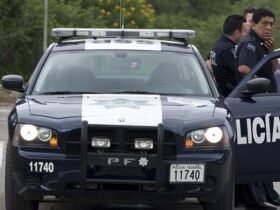Parāoa parai, as it is known in Aotearoa, is a post-European culinary evolution of the Māori cuisine. Whoever cooked it first should be applauded for their genius.
Parāoa parai has graced the tables of many marae around the country for more than a hundred years. And many Māori homes. When we were cut off from our food systems through acts of land confiscation and alienation, we turned to the convenient, easily obtainable and cheap foods of the Pākehā. Flour, sugar, potatoes, a range of new vegetables, meat and lard. All the makings for a good boil up, with a side of parāoa parai — and numerous associated health problems as a result. But that is another story.
Parāoa parai became a convenient food that could feed the masses on a very small budget. But the love that is pounded into each piece belies the technicalities of its creation. There are many different ways to make parāoa parai. What flour is the best? Yeast or no yeast? How long do you leave it to rise? What type of oil? Sugar and salt ratios? Each recipe is just as confusing as the next. But the best way to learn is teaming up with someone renouned for their parāoa parai making skills. Because it is an art to get that perfect amount of fluffy and crispy and not flat rocks.
I have a photo of my nan sitting on my desk by my computer. I know she loved her mokopuna fiercely. She took the oldest two in to live with her. I just missed out. My parents not willing to part ways with me. I grew up in Invercargill where parāoa parai was not a feature of my upbringing. It has recently dawned on me the role of kai as a connector of people, of past generations to the present and future, and how much knowledge is imbued in each meal. Not only did I grow up away from my nan and my whānau Māori, I also grew up away from mātauranga ā-whānau, family knowledge, of kai.
On a trip back to the East Coast some 10 years ago, I was mixing burnt sugar into a steamed pudding batter by hand. As my hand moved through the mixture, turning, swirling, making sure the two liquids were properly combined and, importantly, there were no lumps, my aunty said to me, “You have hands like your nan”. I do not remember the times I met my nan, I was only 3 years old when she passed away, but to hear those words filled a hole, a desire of belonging I did not know I had. Knowing that something of my nan had made its way to me. Something that belonged in the kai-making space.
My hands have recently turned to making parāoa parai. I know. I get to my 40s and make it for the first time!! My first batch I divvied out between people. I gave some to my older sister (not my dad’s daughter) and she said, “This reminds me of your dad, making a whole heap for us every week”. Instantly shocked. I have no memories of my dad ever making parāoa parai. I am sure he would have learnt this from my nan but, like many other things, he never taught me. Maybe it was a skill he thought I would never need. Our lives in Invercargill reflecting a different time and space both socially and financially.
That one simple statement though, also made me realise that my nan’s hands are my dad’s hands. My dad’s hands are my hands. My hands are my children’s hands.
Over the past few months, their 3 and 5-year-old hands have made countless amounts of parāoa parai with me. They’re not interested in eating it, not yet anyway, but we all enjoy the smiles it brings to our friends and whānau. Especially our little Meihana, our whanaunga’s son from the bay over from where we come from on the East Coast. Parāoa parai with butter and golden syrup is a guaranteed winner with him. One day soon I know he will join in on the chaotic fun of the parāoa parai production line.
Every Christmas my older sister makes a fruit cake, a recipe handed down from our (Pākehā) grandmother. She even uses the old school scales — the ones with actual metal weights — to weigh the ingredients. Every year my sister offers to teach me how to make it and I decline. I am a little bit scared I will mess it up. But maybe next time she asks I will say yes, before I no longer have access to the master fruit cake maker, and another part of my kai whakapapa disappears with her. Because making parāoa parai would be a heck of a lot easier if my dad was still around.













Leave a Reply